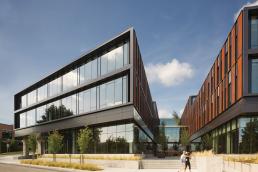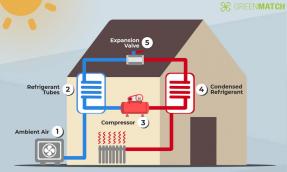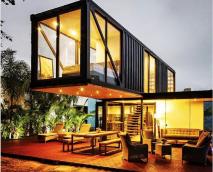Dehumidification - Balancing Energy Efficiency with Durability, Comfort and Health


Why do we need dehumidification in wet or humid climates or seasons? How do we determine the right amount of dehumidification to size units? Green Builder Matt Hoots of Sawhorse Inc. introduces this informative talk by Nikki Kruger with Santa Fe Dehumidifiers by explaining the need to balance the increasing energy efficiency of modern homes with the durability, comfort and health concerns that can arise with excess moisture.
As we think through how to build more efficiently and sustainably, Matt reminds us that homes that are designed for today’s heating and cooling needs perform better when these systems are designed and operated as intended. Failing to design for humidity or to run HVAC equipment as designed might lead to excess (or inadequate) moisture conditions which can damage property, make occupants less comfortable, and introduce or exacerbate health risks.
As Nikki reviews, higher SEER ratings are desirable as this means lower consumption and lower energy bills. But the larger coils of these systems require run less time to get cool, and they also don’t get quite as cold, which can lead to condensation risk. This means they’re not removing as much moisture as in the past. When the system isn’t running, that moisture can remain and then evaporate back into the built environment, conflicting with humidity goals. So the challenge is how to deliver comfort and health and property protection as efficiently as we can.
When possible, it’s recommended to rely on an ERV for ventilation and to have separate dehumidification equipment. Ventilating dehumidification equipment does ventilate, but just as with A/C, ventilation is not the primary focus of that equipment. As ERVS do not dehumidify as their main focus and as they do introduce humidity from outside air, it’s recommended to dehumidify with ventilation if only one type of this equipment can be installed.

With air conditioning running in wet climates, the systems are designed to handle a good deal of moisture, even though cooling and not dehumidification is the primary function of this equipment at this time. But air conditioning systems do not always run at peak load, and they do not always run, particularly in shoulder seasons where the temperature might be more comfortable for occupants and they do not think to tun air conditioning systems or fans. Additionally, filtration isn’t employed to remove pollutants when air conditioning and fans aren’t running. In all seriousness, most people really don’t’ think through that a filter that is off is not filtering anything. Who would think a top concern isn’t the most obvious day when it feels humid to the average person? If it’s 70 degrees and raining, or it’s a shoulder season, or a system isn’t running at peak, a dehumidifier will do a better job of managing humidity.

Why might the relative humidity be high in a home?
- Short equipment run times can lead to a lower heat load
- Oversized systems do not run as often
- Excessive outside humid air drawn in
- Occupants generate humidity - People generate 1/4 pint just from breathing and 1/4 pint moisture per hour of average activity!
- A lack of ventilation in kitchens and bathrooms can add to humidity problems
- Energy efficient HVAC systems can be less effective at removing moisture from the air
- Inadequate dehumidification capacity
- Spaces with lower temperatures, like crawlspaces, are more humid and can contribute to overall humidity
- Cracks in buildings without vapor barriers can also let humid air and moisture infiltrate
- Expecting air conditioning equipment to handle excess amounts of humidity
- Construction materials and building materials release moisture during projects and also seasonally once built
Nikki reviews how dehumidifiers work and why dedicated dehumidification makes sense in humid climates. She also reviews the target of 50% humidity for human comfort and asset preservation. it’s also important to understand that dehumidification generates heart - it takes about 1054 btus to remove 1 pint of water! So we need to understand that the heat generated can affect comfort. Air leaving a dehumidifier is 15-20 degrees warmer than the air supplied.

How do you choose the right equipment? For one thing, of course work with an accredited HVAC professional. But Santa Fe has a free Psychrometric Calculator app for determining how much water needs to be removed in certain conditions.
https://www.santa-fe-products.com/resources/calc-app/#:~:text=Numbers don't lie,Calculator App on Google Play
The company also provides a comparison of different product capacities and features:
https://www.santa-fe-products.com/resources/what-size-dehumidifier/
Today’s more efficient air conditioning equipment can fail to operate in a way maintains the ideal conditions with respect to humidity. During wetter seasons or during shoulder seasons where air conditioning might not be running, it’s pretty clear that dedicated dehumidification should be considered. For more information, check out the whole video! Nikki reviews many aspects of design, installation and operation!
- Filed Under: Humidity Control - Dehumidification
- Keywords : HVAC, Health, Humidity, Dehumidification, Humidity Control, comfort, Climate Zones, Manual J, Santa Fe
- ( 2454 ) views

The Rate It Green Team - This is an account for Allison and plenty of kind helpers, for sharing information when/where it really doesn't particularly matter which of us actually posted. Questions? Send us a note through our contact form, or email info@rateitgreen.com.
- ( 0 ) Ratings
- ( 105 ) Discussions
- ( 6 ) Group Posts
Reply/Leave a Comment (You must be logged in to leave a comment)
Connect with us!
Subscribe to our monthly newsletter:
 Greenbuild Report Out, 2025 Nov 12, 2025
Greenbuild Report Out, 2025 Nov 12, 2025
























Not a Member Yet? Register and Join the Community | Log in